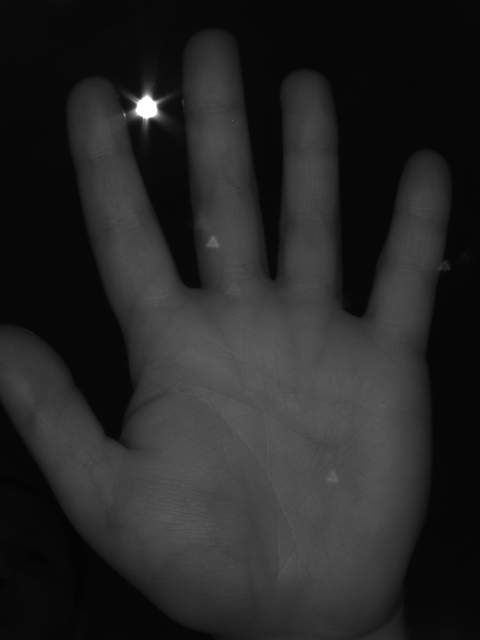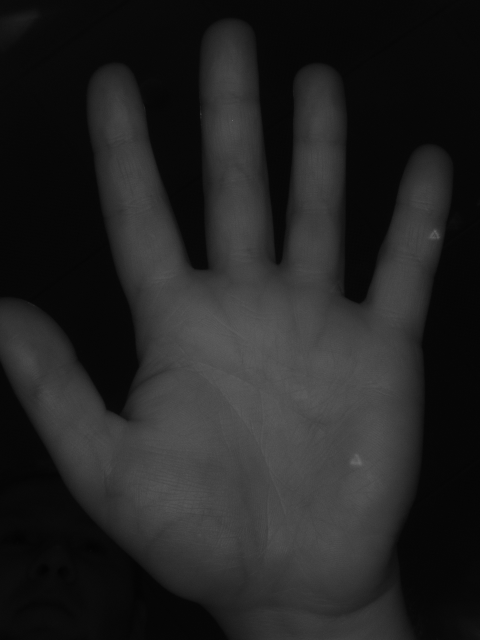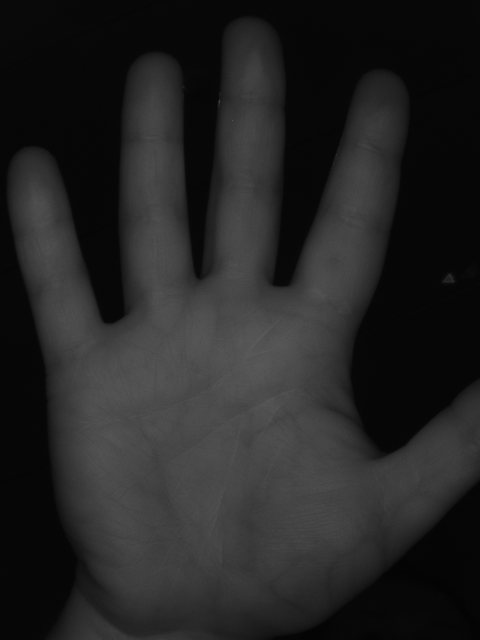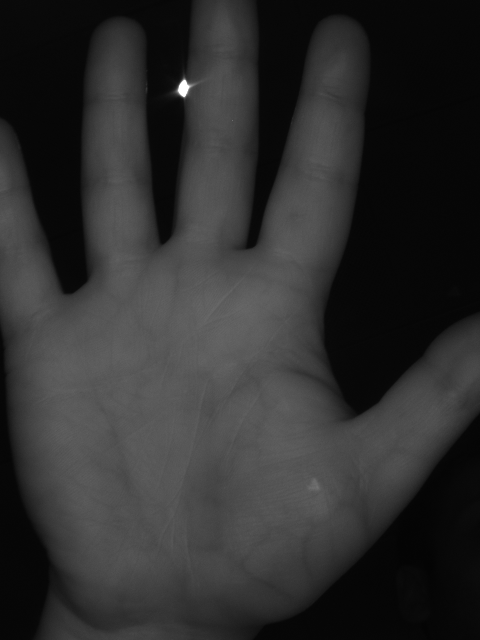VERA PalmVein
Description
All palmvein images have been recorded using palm vein prototype sensor developed by Haute Ecole Spécialisée de Suisse Occidentale in Sion.
110 clients presented their 2 hands to the sensor in two sessions and recorded 5 images per palm. Results is a Database of 2200 images of palmvein images.
The recordings have been performed at 2 different locations, always inside buildings with normal lightening conditions.
The first 78 clients in the Database are from one location and the remaining 32 are from another.
The Database is composed of 40 women and 70 men whose ages are between 18 and 60 with an average at 33.
Information about gender and age of clients are given as metadata for each client ID in the text file METADATA.txt.
Images are labeled as follow: ID_hand_session_shot.png where "ID" is a 3 digits number that stands for client's ID, "hand" stands for the considered hand which can be "R" or "L" ("Right" or "Left"), and "session" stands for the considered session number which can be "1" or "2" (2 session per hand), and finally, "shot" stands for the considered shot number which can be "1" to "5" (5 shots per palm).
Images from the same client are regrouped into a single folder labeled as follow: ID-Gender, where "ID" is a 3 digits number that stands for client's ID and "Gender" stands for client's gender which can be "M" or "F" ("Male" or "Female").
Two different folders are provided "raw" and "roi". The "raw" stands the full palm vein image captured by the sensor and the "roi" stands the region of interest generated by the sensor in the acquisition process.
The format of the images is PNG.
Size of the images is 480 x 680 pixels.
Size of the files is around 165 kbytes per images.
* Example of the nomenclature fot the client #29:
* 029-M/029_L_1_1.png
* 029-M/029_L_2_1.png
* 029-M/029_R_1_5.png
* 029-M/029_R_2_5.png
Here is an example of images from the database:




Protocol
Clients were asked to put their hand on the sensor and then adjust the position such that the palm is on the center of the image.
The Graphical User Interface (GUI) provided by the sensor was used for visual feedback, Near Infra Red light control and acquisition.
When the automated light control was performing unproperly the operator adjusted manually the intensities of the leds to achieve a better contrast of the vein pattern.
Clients first presented the left hand, then the other, each session.
The whole process took 5 minutes per clients in average.
Reference
If you use this database, please cite the following publication:
Pedro Tome and Sébastien Marcel,"On the Vulnerability of Palm Vein Recognition to Spoofing Attacks", IAPR International Conference on Biometrics (ICB), 2015.
10.1109/ICB.2015.7139056
http://publications.idiap.ch/index.php/publications/show/3096